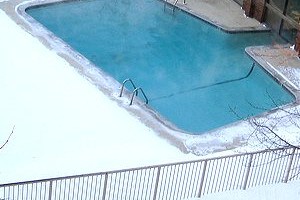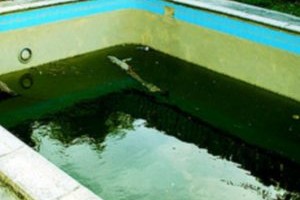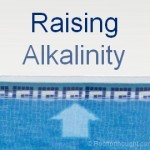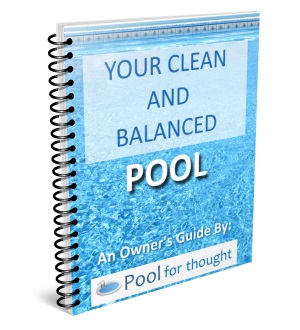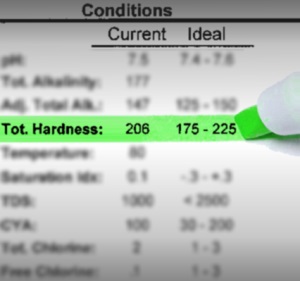
I explain in this article what calcium hardness is, why it’s important for your swimming pool, and what happens if calcium hardness is too high or too low. Lastly, I give a general guide on how to keep your swimming pool calcium hardness in-check. You can also learn how to test pool calcium hardness and take action; lowering pool calcium hardness if calcium hardness is too high, and raising pool calcium hardness if the value is too low.
[sc:ad_Pool_Related_Google_300_x_250]Importance for your pool
Why is Maintaining Pool Calcium Hardness important?
In addition to pH and total alkalinity, calcium hardness must be kept in balance so that your pool water does not become too corrosive or end up scaling the surface of your pool. These are symptoms of swimming pool water that is unbalanced.
The recommended range is 150-400 ppm (parts per million), with an often cited stricter range of 200-400 ppm. Keeping your calcium hardness in the midpoint between the low and high should be your goal.
Depending on where you live and the hardness level of your local water source, you may have received a slightly different recommended calcium hardness range. For example, where I live, we have notoriously hard water, most of which is pulled from an underground aquifer. This water is very hard, so we have been told by our pool service provider to keep our hardness on the low side, as the hardness will creep up over time just from the act of adding fresh water to our pool, not to mention adding routine sanitizers and water balancing chemicals.
How often do you test? Calcium hardness does not change quite as fast as other numbers, such as chlorine and pH. I recommend a weekly calcium hardness test, and any time you balance the pool with chemicals, or drain and add water to the pool. If your calcium hardness level tends to remain constant, you can test less often, but it really depends on the relative hardness of your local water source. Additionally, if you had any recent rainwater get in the pool, contaminates like dirt and debris, or a high swimmer use (bather load), then another round of testing is recommended.
There is also magnesium in your water, so a total hardness test would measure that as well, but for pools, we only need to worry about calcium hardness.
You can determine how balanced your pool water is by determining its saturation index. When the saturation index is zero, your water is balanced, meaning all major water balance factors are working together correctly. When this value is above zero, your pool is drifting towards a condition where scaling is more likely to occur. When less than zero, your pool is becoming more corrosive and you risk damage to pool surfaces and equipment.
If the pool water becomes too soft (calcium hardness less than 150 ppm)
[sc:ad_Pool_Related_Google_300_x_250]- Concrete and masonry corrosion.Aggressive water is the term used where pool water lacking adequate dissolved minerals begins to search for calcium, and your pool will find it any way it can. The water becomes corrosive, as plaster, concrete, or grout, stone tiling, or any surface that contains masonry can experience etching, pitting, or delaminating; essentially dissolving the surface layer of the material.
- Metal surface corrosion.If you heard that “soft water will corrode metal surfaces”, this is technically incorrect. A pool with water that is too soft often has total alkalinity that is also too low. Low total alkalinity results in low-buffered water, which can result in pH bounce, which in turn can lead to low pH conditions in your pool. It is at this point where acidic pool water can corrode metal surfaces. You can avoid a cascade of problems by keeping the calciuim hardness within the ideal balanced-water range.
If the pool water becomes too hard (calcium hardness greater than 400 ppm)
- Cloudy pool water.Your pool can only hold so much calcium in your pool, dissolved as a calcium salt, before it reaches its saturation point. Any additional calcium forms in the water as calcium carbonate, and is visible and suspended in the water. The out-of-solution calcium can make the water appear cloudy, murky, milky, and even form precipitate flakes of calcium carbonate.
- Water Scale.Excessive hardness in a swimming pool left untreated can result in water scale. Although some of the calcium might free-float in the water, much of it will adhere to pool surfaces. Water scale, also simply called scale or limescale, causes a wide range of problems. Scaling can plug pool filters, reduce water circulation through pipes, valves, and fittings. Pool water heaters will run less efficiently, as water flows through a delicate series of copper tubes, called a heat exchanger, to exchange the heater heat to the water. Lastly, the pool water pump will have to work harder to keep the water flowing, reducing its lifespan.
How to Maintain Swimming Pool Calcium Hardness
Maintaining calcium hardness in your pool is similar to maintaining other chemical and water balance levels in your pool; namely testing the water, adjusting the level with appropriate substances, and retesting to verify the adjustment. As calcium hardness is not a level that typically changes drastically from day-to-day compared to pH or the chlorine level, you can test less frequently.
First balance total alkalinity and pH
Before testing and adjusting the calcium hardness, you need to make sure you have first tested and balanced the swimming pool total alkalinity and did the same for pH. The only exception to this is if you already know your pH is very low, then you need to first bring your pH up to or near 7.0.
[sc:ad_Pool_Related_Google_300_x_250]The reason you balance alkalinity, pH, then calcium hardness is that adjusting alkalinity often affects pH. Adjusting both alkalinity and pH often affects your calcium hardness, as adding sodium bicarbonate (baking soda) and sodium carbonate (soda ash) can increase the hardness of your swimming pool water.
Test calcium hardness, and interpret the results
To test, you need a test kit or test strips that can perform the calcium hardness test and produce an accurate reading so that you can read the results and determine when to lower calcium hardness or raise the hardness level.
Since calcium hardness is an occasional test, you might want also want to take a water sample to your local pool service provider. They often will test water samples free, as it’s a way to get you into their store and a way to maintain a good relationship with pool owners in the area. An added benefit is you can ask questions and get advice about anything pool related. You can also verify your test methods are correct as you are getting a second opinion on your test results.
Adjust the calcium hardness level
You will have to raise the calcium hardness level if the level you tested was less than 150, and you will have to decease the level if it is over 400 ppm. I explain in detail how to do this in the following articles:
Over time, you will see if your water hardness level tends to raise, lower, or stay unchanged over time. Mine tends to drift higher, as the local water source and shocking the pool water appear to steadily raise the calcium hardness level, and I have been partially draining the pool once nearly every season.
Conclusion
[sc:ad_leaderboard_google] Calcium hardness is one of the three key indicators of keeping swimming pool water balanced. It is important to test occasionally to make sure your pool water is neither too hard or too soft, but within the ideal calcium hardness range (150-400 ppm). With occasional adjustments, you should have no problems keeping your pool calcium hardness level balanced.Sources:
- “South Dakota Aquifers”, https://www3.northern.edu/natsource/earth/aquife1.htm
- “Water Quality Answers”, https://www.wqa.org/sitelogic.cfm?id=366
